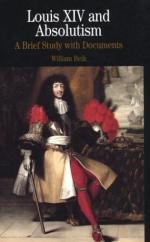|
This section contains 982 words (approx. 4 pages at 300 words per page) |

|
Absolutism and Constitutional Monarchy
Summary: A comparison and contrast of the rise of absolutism and the development of constitutional monarchy in Europe during the sixteenth and seventeenth centuries. Diverse political, historical, economical, and religious conditions in different parts of Europe led to the development of both absolute monarchy, in which a single ruler possessed all the power, and constitutional monarchy, in which the king and a parliament rule together and are dependent on each other.
In Europe during the 1700's, two different types of government systems existed: absolutism and constitutional monarchy. First of all, what are absolutism and constitutional monarchy? Absolutism is when the king or queen has unlimited power and control over his or her people and tries to control all aspects of society. On the other hand, constitutional monarchy is when the ruler has limited power and shares his or her power with the parliament. Both the ruler and the parliament are dependent on each other; in order to carry out a task, they both had to agree and support the idea. Many parts of Europe practiced absolutism, but England was an exception. The factors that affected the rise of absolutism and the development of constitutional monarchy are based on political, historical, economical, and religious conditions. These diverse factors and conditions in different parts of Europe thus led to the development...
|
This section contains 982 words (approx. 4 pages at 300 words per page) |

|


